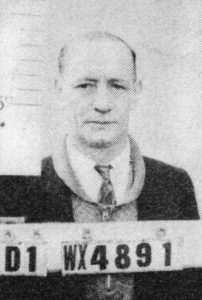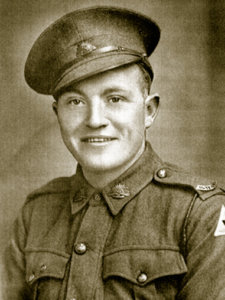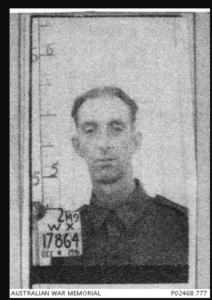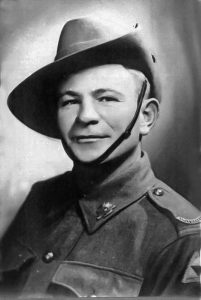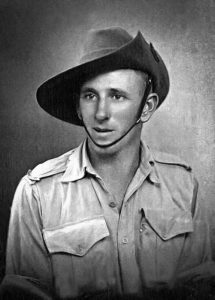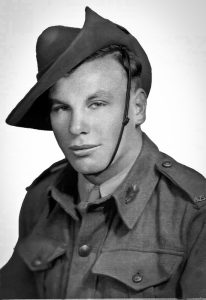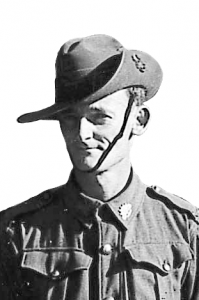2428 POWs died throughout 1943-1945 (including all 641 British POWs).
The Australian death toll of 1787 equals 99.75%.
‘B’ Force Borneo – The Men of this Force did not work on the Thai Burma Railway. Following surrender, they worked in parties around Singapore until ‘B’ Force was formed sailing to Borneo.
‘B’ Force comprising 1495 Australians of which 145 were officers were next to leave Singapore following on from ‘A’ Force Burma. (This ratio of about one officer to every 10 men is extremely high). They departed Singapore 8 July 1942 on passenger-cargo ship ‘Ume’ Maru to Sandakan in the State of British North Borneo (today known as Sabah). The conditions were crowded, cramped and very trying. ‘Ume’ Maru arrived 10 days later on 18th July 1942 and POWs marched from Sandakan 8 miles to their internment camp, Sandakan No. 1 POW Camp. Their guards were Formosans (Taiwanese) and not Koreans as was the case in Burma and Thailand, under the command of their Japanese Imperial Army (IJA) and Kempeitai Officers (Japanese Secret Police).
(‘Ume’ Maru was sunk by American submarines Seahorse or Trigger late October 1943. Built 1917-1920 they were built for Kawasaki at Kobe, Japan.There were about 10 ships of this ‘fleet’ about 385 foot long and 51 feet across the beam. They had a gross tonnage of 5,870 Tons.)
The POWs were addressed and advised by Japanese Guard Commander Captain Hoshijima, Susumi they were to construct an airfield at Sandakan.
Please read about the Borneo War Trials held at Labuan.
Hoshijima was tall for a Japanese.
He treated the war trials with disdain and during one day’s proceedings actually laughed. He also suffered a malarial attack and was given time to recover! When sentenced to death he was denied the privilege of sending his nail cuttings back to Japan to his family although he did write about 20 letters to his family, more than any other Japanese on trial at Labuan.
Hoshijima had been appointed as the Engineering Officer in charge of construction of the airfield but had also been ordered to take over duties as Camp Commander from Lt. Okahara. This post for which he was not suited nor particularly interested in resulted in his subordinates running the camp.
Initially there would be one airfield runway however the Japanese soon realised they were under pressure from successful Allied attacks on many fronts therefore they would require 2 runways. The first task was to construct the necessary road before starting on the aerodrome.
Very early there were several POW escape attempts. This resulted in rations being severely reduced. On 31 July 1942, 11 Australian POWs escaped. Up until this time the camp was not fenced, this changed very quickly as did the severity of punishments.
Eventually all 11 escapees were captured with several shot where they were discovered. The story of this escape, the betrayal of the underground and illicit radio involving several locals including Australian Dr. Taylor and POW Capt. Matthews is another story and not included in this overview of ‘A’ and ‘E’ Forces at Sandakan.
One member of ‘B’ Force from 2/4th survived. Alfred Stevens WX2227 was captured and charged with a radio – sent to Outram Road.
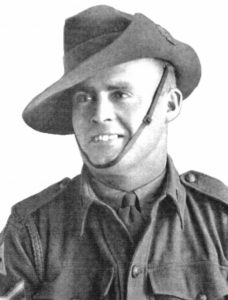
Please read further about Alf Stevens and the Story of Sandakan Underground Network
The first runway was completed September 1943. The land dropped away at the end of both runways and became necessary to have landfill. The work was physically demanding. When working on the aerodrome, conditions were hot and the men worked without shade. Their clothing soon disintegrated along with their boots. The men wore loincloths and were without shoes. It is not difficult to imagine how quickly this physically demanding construction work wore the men down; the slightest abrasion from rocks, stones and small flying fragments would open up a small flesh wound and transgress into a debilitating tropical ulcer for which they had no medical cure.
Food supply deliveries from Sarawak became increasingly unreliable and reduced because of the effectiveness of Allied attacks on Japanese shipping.
The food provided, as was the case everywhere, was greatly insufficient for POWs who soon suffered debilitating tropical illnesses such as malaria, beri beri and tropical ulcers and the numbers of sick grew alarmingly. There were insufficient numbers of POWs available for daily work parties and guards pulled sick men from their beds to supplement their daily quota of men. Without medical supplies and equipment large numbers of sick men died. In time those who managed to survive would have found every day a challenge to maintain any spirit or long term hope. What was ahead for them?
There existed ‘bash gangs’ who attacked POWs in numbers for the slightest perceived misdemeanour whilst working at the aerodrome. If one POW was perceived as not working effectively, all and any number of men in his working kumi could be bashed by a ‘bash gang’. Back at camp bashings and punishments for the slightest infringement could land a POW or POWs in what was known as the punishment cage. Prisoners were placed in these small exposed cells without food and water often receiving further spiteful punishment from guards as they walked past. Their miserable and miniscule food could be deliberately spilled onto the ground from where men were forced to eat. Every day POWs in the cage was systematically bashed – they knew it and the guards enjoyed in. The caged POWs were unable to stand. Some punishments lasted more than 20 days and more. POWs on release were unable to recover and death was their only release.
Below: The Cage.
Drawn by Bill Young, sentenced to Outram Road, Singapore and survived.
The cage was roughly 1.5 metres long X 1.2 metres wide and 1.2 metres tall. It was perched on 60cm high stilts. The sides were 5cm wide wooden slats. The floor was solid timber planking with a pitched atap roof and a slatted wooden ceiling. The hinged door took up half the length of the 1.2 metre side, secured by a slip bolt and padlock. It was impossible for anybody of average height to stand.
The Japanese called this punishment cage ‘Esau’ and it was placed by the Big Tree in front of the main guard house.


‘E’ FORCE BURMA – as with ‘B’ Force, these men remained working with various parties around Singapore, before forming ‘E’ Force to sail to Sandakan, North Borneo.
‘E’ Force originally comprised 500 British and 500 Australian POWs, departed Singapore 2 March 1943 sailing on a small cargo tramp ship de Klerk to Kuching, Sarawak where they remained 8 days and POWs were accommodated at the Lintang Barracks.
9 April 1943 – Australian contingent of ‘E’ Force marched out to board ‘Taka’ Maru, a small steam cargo ship which took 5 days to sail around Borneo coastline via Lubuan to Sandakan. (The British POWs had departed separately). The POWs disembarked at Berhala Island and were accommodated in a POW Camp which had opened 15 August 1942. Conditions were described as ‘pretty good’. The POWs were even allowed to swim under the supervision of guards.
A greater number of ‘E’ Force POWs were in better physical condition than other work Forces – they were from combat and engineering units which had spent months in work parties around Singapore. Medical examinations had weeded out the sick and generally the men were fitter with fewer ‘old blokes’. There was already talk of escaping.
4 June 1943 – Preparations were ready to move ‘E’ Force to the mainland by barge.
5 June 1943 – 8 POWs escaped during the night splitting into groups to make good their initial safety. Of the total of 23 POWs who attempted escape it was only these 8 men from Sandakan and Berhala Island who were successful. Jock McLaren was one of the successful escapees. Please read further about the successful escapee Jock McClaren
He went on to join guerrilla forces throughout the war. The story of his life ‘Bastard behind the Lines’ written by Tom Gilling is worth reading.
Please read further about Ted Keating, Jock McClaren
6 June 1943 – ‘E’ Force Australians were marched to the jetty – most POWs were not aware of the escape during the night, however it became obvious something was happening as shown by skittish behaviour of their guards and the Japanese.
At Sandakan the POWs were split into 3 groups which the Japanese kept deliberately separated. Punishment was severe if the guards found men talking to anybody from another Camp. Some communication was maintained between the Australians in No.1 and No. 3 Camp which were about a mile apart.
The original “B’ Force was at No. 1 Sandakan Camp
Combined British were at No. 2 Sandakan Camp
‘E’ Force Australians POWs were at No. 3 Sandakan Camp (the distance between the two Australian Camps was about 1 mile – communication between camps was forbidden and punishable.)
On 15th October 1943, the majority of British and Australian officers were removed and taken to Kuching, included Johnny Morrison and Brian Walton of 2/4th and 8th Div Signals Lt Russ Ewen who lived a long life, at least until he was 99 years and Bill Young who was sent to and survived Outrim Road Gaol.
In fact it was Russ Ewin who recorded in an interview with Richard Braithwaite for his book ‘Fighting Monsters’ story of
Dick Braithwaite in regards to the officers sent to Kutching that ‘Johnny Morrison did not recover well from Kutching Camp.’ See P. 468.
It is recommended you read the story of the discovery of the secret underground at Sandakan.
On 17 October 1943 ‘B’ Force was amalgamated with ‘E’ Force.
There were no roads running east to west. Roads are confined to coastal towns. There existed only rough native trails connecting villages in the interior. There were a few British ‘bridle tracks’ which ran from the east coast to nearby hinterland. Before the war very few white men could claim to have crossed the country on foot.
Following their successful invasion of Borneo the Japanese quickly realised they needed a route across the island to transport arms and supplies.The original shipping route around the island was fast closing with the Allies winning control of the air.
The Japanese quickly realised any prospect of building a road was clearly unrealistic and they engaged local population to cut a route. A foot track to connect Sandakan through gradually ascending country to Ranau 160 miles west. From there it was down to the coast to Jesselton via the foothills of Mount Kinabalu.
The most critical and most difficult part was between Sandakan and Ranau. This was completed in three stages in 1942.
The details can be read in Paul Ham’s ‘Sandakan’ –
First stage: connects existing British track at 42 mile peg with head water of Sapi River.
Second stage: connects the 63 miles west between Sapi and Tampias.
Third stage: follows an existing native foot track from Tampias to Ranau.
Finally from Ranau the track joins a British-built track linking Ranau to Tuaran and Jesselton a distance of 76 miles westwards.
Orang Tuan Kualang headman from Maunad and local Dusan Chief were placed in charge of creating the track. Kuluang was a hunter, knew the interior of Borneo well and unbeknown to them, despised the Japanese. With Kualang, the locals chose the most difficult possible track. Little did they know the POWs would be using it. An alternative track could have avoided difficulties by following river valleys and through plantations rather dense jungled terrain.
During late 1944 the Japanese aware of the ever-increasing Allied Invasion decided to move the POWs inland away from Sandakan and to relocate their own men.
AWM 044659 Sandakan from air 1945 – Left POW Camps with Japanese Military Airfields with bomb craters evident.
The numbers of Japanese at the Sandakan Garrison had increased and the process of stockpiling food had begun.
Sandakan was being heavily bombed by the Allies. In a series of air raids commencing October 1944, Australian and Americans together bombed and strafed Sandakan airfield and destroyed about 60 Japanese aircraft on the ground. On Christmas Day 1944 the B24 Liberators finally put the airfield out of commission.
On 10 January 1945 work on the Sandakan airfield ceased.
There were no further rice issues for POWs. Japanese Imperial Order! Camp Commander Hoshijima had ordered that on NO account were the POWs allowed to purchase food from the local natives. (it was later discovered Hoshijima had several hundreds bags of rice hidden beneath his house as well as Red Cross parcels, medicines for malaria and other illnesses).
Hoshijima knew there were several hundred POWs in hospital – existing on a ration was 4oz rice per man daily and no hope of surviving.
From now on the POWs’ labour would be used for another purpose along the track between Sandakan and Ranau.
The POWs were by this time, in very poor health. They had been fed minimal food for a very long time, had worked and slaved long hours, and besides suffering from starvation, their emaciated bodies were prone to tropical diseases. But worst of all, the men were subjected to continuing extreme brutal treatment by their Taiwanese guards and Japanese soldiers.
The Australian POWs maintained comradeship and caring for mates right up until they reached Ranau. It was here where survivors of the death marches were so desperate for food and such was their wish to survive that they became untrusting of each other.
Timeline:
28 Dec 1944: Heavy Allied air raid closes Sandakan airstrip.
Please read about two 2/4th deaths Sandakan December 1944
EarlyJan 1945: Work ceases at airfields
10 Jan 1945: Rice rations to POWs ceases. Now reliant entirely on their own (small) stockpile. Quota set at 70 grams daily
The First Sandakan to Ranau Death March commenced on 28 January 1945.
POWs now in very poor health easily became ill with many facing death.
28 Jan 1945: 455 POWs in 9 groups make up 1st March Sandakan to Ranau
28 January 1945 – First Sandakan-Ranau March left in 9 batches of about 50 men leaving consecutive days until 6 Feb 1945.
370 Australian and 100 British POWs set out in groups of nine parties leaving in consecutive days, with the last party departing on 6 February 1945. The POWs were each to carry on their backs 20 kg bags of rice, ammunition or whatever the Japanese demanded.
Before they left Camp, the Japanese Commanding Officer requested to address the accompanying soldiers and guards. They were ordered NOT to leave any sick POWs or stragglers behind and to be disposed of. The Japanese planned not to have any POWs assist in any way with an Allied invasion. (It can also be said they did not want any evidence of the previous year’s of brutality and starvation known).
Yamamoto who leads the expedition expects the prisoners to reach Ranau within 12 days a tough expectation for healthy men let alone emaciated and ill prisoners carrying heavy loads without shoes – who have been enslaved, beaten and starved for 3 years!
Each prisoner is loaded up with an ammunition sack slung across his front and a rice sack on his back! About 55 lbs in weight!
The rainy season had not finished. The emaciated POWs had to march through boggy mud with these heavy loads. They were to be provided either very little or no food. The guards sometimes stole food and personal items from the POWs. They also took blankets and clothing from POWS to sell for food – of course the POWs received very little if nothing of the food purchased. There were increasing numbers of guards and Japanese deaths – they were not carrying any supplies, nor their own personal items. This was all allocated to the POWs.
Mid Feb 1945: Groups 1-5 arrive Ranau. 70 POWs have died.
Mid-Feb 1945 Groups 6-9 arrive Paginatan. 44 POWs have died.
22 Feb 1945 Rice carrying between Ranau to Paginatan begins

AWM 042511 Paginatan Village 42km east of Ranau from the direction of Sandakan. It was the location of Japanese food dump. POWs were forced to carry bags of rice from Ranau to Paginatan – POWs died or were beaten to death on this track.
Please read an overview of the Marches.
‘Those who survived the first march arrived in Ranau in February 1945. They were then forced to carry 20 kilogram packs of rice back towards Paginatan, 20 kilometres back the way they had come. By early June 1945 only 18 were living. The 10 who could walk were moved again, the remaining 8 were shot.
A second march with 540 men left Sandakan on May 29th. When they arrived in Ranau only 6 men from the first group of 455 remained alive. In Ranau the POW’s were “surviving” on 70 grams of rice, polluted water from the Japanese camp and having to carry water and vegetables up to 30 kilometres a day. Dysentery took many men.
A third and final group, which comprised only 75 men set off from Sandakan in mid-June. They were never seen again.’
‘The Marches’ can never be called marches – the prisoners at best managed a silent plod with loads of 20 kg on their backs (including ammunition). The men willing themselves to keep moving for should they fall they know they will never get up. Observing locals could do nothing for them – punishment was swift and severe for them too. The locals described the men as wretched and wasting away – the POWs silently indicating their hunger by putting their fingers near their mouths.
March 1945: Escalation of death tolls Ranau, Paginatan and Sandakan
1 Mar 1945: Crease and Cleary escape from Ranau
12 Mar 1945: Cleary recaptured
13 Mar 1945: Crease recaptured
14 Mar 1945: Crease shot dead at Ranau.
17 Mar 1945: Hoshiyama , Camp Commandant receives order ‘all POWs to be exterminated’
20 Mar 1945: Cleary dies Ranau – following 8 days of systematic sadistic torture which POWs are forced to hear every moment.
Below: Gunner Cleary who was tortured and beaten to death – mate of Ted O’Laughlin of Boyup Brook POW Memorial. Please read further.

30 Mar 1945: Groups 6-9 arrive Ranau
Mid Apr 1945 – British POWs are moved to wired section of Australian Camp Sandakan (previously accommodated separately in their own Camp at No. 1).
25 Apr 1945: Ranau Airstrip bombed and strafed by allies. 2 POWs killed.
27 Apr 1945: 56 Ranau POWs are moved to Jungle Camp
28 Apr 1945: All sick are moved out of Sandakan Camp accommodation, placed in wired section without shelter whilst Japanese proceed to burn entire camp and all documents. POWs devastated – this Camp has been their home for 3 years. There was no time to gather all their belongings. Most were carried or crawled out.
17 May 1945: Hoshijima relieved as Sandakan Camp Commandant. Replaced by Takakuwa.
17 May 1945: POW Murray murdered at Ranau
23-26 May 1945: Allied air attack on Sandakan kills several POWs. (Allies incorrectly informed all POWs had departed Camp)
27 May 1945: Combined Air/Sea Allied attack on Sandakan
29 May 1945 – 2nd March from Sandakan
536 POWs set out in groups of 50-60 to march to Ranau from 8 mile camp at Sandakan – only one fifth are deemed fit.
288 sick are left behind, dying at a rate of 10 men per day – left in open and without shelter in wired section of Sandakan Camp
The 288 sick are carried or stagger out from their huts to be laid in a wired paddock in rows, out in the open. The men wear nothing but rags and are lucky if they have a groundsheet. There are no cooks or medics left behind to help them. There is no medicine and very little food remaining.
The ‘fit’ POWs are organised into clusters of three – each containing four groups of about 50 men. Groups 1-8 are virtually all Australians, Group 9 is mix of Australian and British POWs and Groups 10 and 11 are all British. (this info from Paul Ham’s ‘Sandakan’ P347-348)
The guards destroy Sandakan camp. After loading up POWs to carry heavy loads of ammunition to Ranau, the Japanese blow up ammunition depots and torch all the huts of No. 2 and No. 3 Compound destroying the POW’s homes for the last three years. It is a very emotional time for the men. They burn all records.

AWM 120461
Burnt out Sandakan Camp Compound. The cage for POW torture was immediately right of tree. Japanese guard house was right of cage.

‘Views of burned out POW camp sites huts, etc in the POW camp at Sandakan.’ ‘One area in No. 1 Compound of Sandakan POW camp was found to contain approximately 300 bodies believed to be of those men left in the camp after the two death marches to Ranau. All the graves contained a number of bodies, in some cases as many as eight or ten, and it is thought that these mass burials indicate that personnel were murdered and buried here.’ (Original official Military History Section captions, October 1945)
Smoke from the fire brings low-flying Allied Catalinas to attack.The Allied air attacks continue. The settlement of Sandakan is being bombed daily.
6 June 1945 – several days into 2nd March – near village Maunad the guards announce each group faces another days march! Each man has half tin sugar and same of salt to last whole trip and a dwindling rice ration of 3 oz per day. The POWs realise they have no hope of completing their journey. There are now 118 Australian and British soldiers dead.
7 June – About 35 POWs 2nd March are tortured and massacred at 55 mile peg, about 8 km from the Tangkul Crossing. There are four 2/4th men included:
Charles ‘Bubbles’ Holme WX16416 b. Harvey 1922 enlisted 10 Sept 1941. His mother died in childbirth, his father unable to care for a newborn asked his employers Mr & Mrs Gardiner to take care of his newborn son. They were to care for him for his whole childhood. It is believed Bubbles was working at Worsley when he enlisted. Bubbles Holme sailed to Borneo with E Force. He was 22 years old when he died. His broken-hearted father committed suicide several years after the war.
Private Joseph Sevier WX8544 b. Bristol, England enlisted 18 Oct 1940. He sailed to Borneo with ‘E’ Force. He was 38 years old when he died.
Acting Corporal George Smith WX4891 b. Scotland enlisted 6 July 1940 was Cook for ‘B’ Company. Sailed to Borneo with ‘E’ Force. He was 42 years old when he died on 7 June 1945. He left his wife Aileen, two sons and a daughter.
George and his family, several of his siblings and his widowed mother also migrated to WA with him about 1927.
WX14775 George Lane Taylor – Kalgoorlie born and educated George was working in Bunbury when he enlisted July 1941. He became signaller for HQ Coy. Sailed to Borneo with ‘B’ Force. He was 25 years old when he died.


Above: Left: ‘Bubbles’ Holme and Right: Joe Sevier

Below Left: George Smith Right: George Taylor
6-7 June 1945 – Allied Aircraft strafe marchers on the track forcing the Japanese and Formosan guards to scatter into the bush – Campbell and 4 other POWs escape. Campbell is the only POW to survive and reach freedom.
Please read about Campbell who in 1991attends a Sandakan POW Memorial Service, Sabah, Malaysia
7 June 1945: Campbell and 4 other POWs escape from march.
9 June 1945: Braithwaite escapes march.
10 June 1945: 10 ‘fit’ Ranau POWs moved to new Jungle Camp, south of village. 8 POWs too sick to move are murdered.
15 June 1945 – 75 POWs leave Sandakan on Third March.
28 June 1945 – 183 survivors of 2nd march arrive Ranau.
Only 6 men from First March remain alive. The two groups are deliberately kept separate to avoid communication.
30 June Sticpewich receives permission to build a hut for prisoners – 184 survivors of 2nd March are sleeping in the open (while Japanese and Formosans occupy 3 huts on riverbank.) . Sticpewich finally makes contact with 1st March six survivors – and learns everybody else is dead.
Within three days, 20 of the 184 survivors are dead and the death rate continues as POWs exist on a daily ration of 2 1/2 oz rice and must undertake daily duties of carrying water for the Japanese, gathering wood and vegetables, collecting bags of rice from Ranau.
7 July 1945 – Botterill, Short, Moxham, Anderson escape from Ranau. 100 men remaining alive. (Botterill, Short and Moxham escape successfully and are recovered in extremely poor health. Anderson died illness ).

Above: Bill Moxham (sadly committed suicide in 1961) From DVA’s Anzac Portal:
Groups 1 to 5 all marched through to Ranau, losing 70 out of 265 POWs along the way. Groups 6 to 9 were held at the village of Paginatan, ostensibly because there was no accommodation for them at Ranau. Private William Dick Moxham, 2/15th Australian Field Regiment, was with Group 7 and he recalled their progress over the 200-odd kilometres between Sandakan and Paginatan:
‘Men from my own party could not go on. Boto was the first place where we actually had to leave anyone. They remained there, at this Jap dump. At the next place, at the bottom of a big hill, we left two more men. Later, we heard shots, and we thought the two men must have been shot… In all of my dealings with the Japanese, I have never seen anyone of our chaps after they had been left with the Japs. Once you stopped—you stopped for good.’
Groups 6 to 9 remained at Paginatan for about a month. There, many simply wasted away and died. Some, including the sick, suffered the same routine of brutality that they had encountered from the guards at Sandakan. Of the 138 POWs from groups 6 to 9 who had reached Paginatan, there were but 68 left one month later. At the end of March approximately 50 to 60 Paginatan survivors set off for Ranau. Dick Moxham remembers the nightmare journey:
‘One man was puffed up with beriberi in the legs and face, and was getting along all right on his own and could have made it; but the Japs would not let him alone, but tried to force him along, and eventually he collapsed. They kicked him on the ground. The Jap turned and saw the man had gone down, and he struck him over the head with his rifle butt. The soldier was left there. The party marched on.’
Just 46 of them reached Ranau alive to join the remnants of groups 1 to 5.
Sticpewich was hit by a car crossing a road and died in 1977.
Dick Braithwaite died of cancer in 1986. From DVA Anzac Portal:
By mid-April the Japanese had decided to move the rest of the POWs away from Sandakan, an area where they expected an Allied landing. However, a final evacuation of the camp came about only after a large sea-air bombardment of Sandakan on 27 May. This attack severely damaged most of the town and convinced the Japanese that the foreshadowed invasion was imminent. They withdrew their defences inland beyond the POW camp that now stood between them and any Allied troops who might be landed at Sandakan. In these circumstances, the camp, which contained approximately 800 malnourished, ill and, in many cases, dying POWs was evacuated and burnt. Dick Braithwaite watched his home of three years go up in flames:
‘It was a strange, sad sort of feeling to see those huts going up. Knowing also, of course, that any records of our friends that had died, things that we’d made and cherished, the little pieces of wood that had become more or less like the family jewels, they were going up in smoke. It was a great loss. It must have been in the back of our minds all the time that this was it for us.’
Some 530 prisoners were gathered together in eleven groups for another march westwards to Ranau. The remainder, all too incapacitated to move, were left behind in the smouldering ruins.
Nelson Short died of a heart attack in 1995.
From DVA’s Anzac Portal.
Nelson Short was on the second march and he recalled the bravery with which many POWs faced their end:
‘And if blokes just couldn’t go on, we shook hands with them, and said, you know, hope everything’s all right. But they knew what was going to happen. There was nothing you could do. You just had to keep yourself going. More or less survival of the fittest.’
Keith Botterill died of emphysema in 1997.
From DVA’s Anzac Portal
Keith Botterill was with the third group to leave Sandakan on 31 January. For their first three days in the swamp country they had a small amount of rice and six cucumbers among 40 POWs. This was, in Botterill’s words, just enough to keep them alive. Group 3 took 17 days to make the trip through swamp, jungle and mountain forest. Of the 50 who had started out, only 37 reached Ranau. Some had simply died of exhaustion and disease: others, unable to go on, were shot or sometimes beaten to death. As Botterill later recalled:
‘I’ve seen men shot and bayoneted to death because they could not keep up with the party. We climbed this mountain about 30 miles out from Ranau, and we lost five men on that mountain in half a day. They shot five of them because they couldn’t continue. But I just kept plodding along. It was dense jungle, I was heartbroken; but I thought there was safety in numbers. I just kept going.’
Owen Campbell died of cancer in 2003.
Please read further about Campbell
The Six Survivors lived very troubled lives on their return to Australia.
Was it survivors guilt?
Or was it because of the absolute horrors they had all endured?
13 July 1945 – the Hut is completed – the men number about 40.
13 July 1945 – 13 July 1945 – 23 POWs murdered at Sandakan.
28 July 1945 – Sticpewich and Reither escape. 40 POWs remaining alive Ranau.
1 August 1945 – 10 POWs remaining alive at Sandakan.
17 ill POWs massacred at Ranau.
14 August 1945 – 2 POWs alive at Sandakan. One dies during night.
15 August 1945 – Murozumi beheads last remaining POW at Sandakan.
Japan surrenders to Allied Forces.
27 August 1945 – Massacre of rice-carrying parties near Muanad.
Massacre of last 15 POWs at Ranau.
Japanese abandon Ranau.
__________
1787 Total Number of Australians on Nominal Roll
641 Total Number British on Nominal Roll
6 Total Number who Survived
1381 Total number of POWs who died Sandakan
1047 Total number who died on Marches

Above: Richard Braithwaite, 2/10th Field Regiment, escaped Second March June 1945.

Right: Botterill
Of the approx. 195 POWs who had made it through to Ranau from these first groups, by 1 April another 89 had died at the camp and 21 on rice carrying parties between Ranau and Paginatan. The purpose of the carrying parties was to take supplies back to Paginatan for subsequent POW and Japanese groups making the trek from Sandakan. Most of those who died on these nine-day trips were either shot or bayoneted to death for their inability to walk any further. As Keith Botterill, who went on all six journeys, recalled:
‘No effort whatsoever was made to bury the men. They would just pull them five to fifteen yards off the track and bayonet them or shoot them, depending on the condition of the men. If they were conscious, and it was what we thought was a good, kind guard, they’d shoot them. There was nothing we could do.’
At Ranau the POWs were herded into insanitary and crowded huts. Dysentery became endemic and eventually three-quarters of the available living space was occupied by the sick and the dying. Dirt and flies covered everything and the weak, but still relatively healthy POWs, could only watch helplessly as their comrades wasted away with dysentery or their bodies became distended with the accumulated fluids of beriberi. Each night, Keith Botterill recalls, was a night of death followed by a morning of burial:
‘You’d wake up of a morning and you’d look to your right to see if the chap next to you was still alive. If he was dead you’d just roll him over a little bit and see if he had any belongings that would suit you; if not, you’d just leave him there. You’d turn to the other side and check your neighbour; see if he was dead or alive.
There’d be a burial party every morning … which consisted of two men to each body. We used to wrap their wrists and ankles together and put a bamboo pole through them and carry them like a dead tiger. We had no padre. And no clothes on the bodies, just straight into six inch deep graves. The soil was too hard to dig any deeper. We’d lay the body in and the only mark of respect they got, we’d spit on the body, then cover them up. That was the soldier’s way.’
Below: Nelson Short


Above: Owen Campbell

Above & Below:
Sticpewich at Tokyo War Trials. He was the only surviving POW physically and mentally able to attend.

Sticpewich was deeply despised and distrusted by the other survivors. Several physical confrontations had to be broken up between him and the other survivors. He had ingratiated himself with the Japanese over the years and lived outside the Compound – his food consumption was greater than the other POWs and he had access to medication for malaria, etc. The other escapees immediately recognised him because he remained in reasonable health whereas the other escapees were so starved, in appalling condition and nearing death – they were unable to easily identify each other.
There is much written about the escapees – but sadly, there is so much more we will never know.
__________
‘B’ FORCE – 37 POWs from 2/4th died in Borneo.
a) 39 men from 2/4th departed Singapore with ‘B’ Force Borneo for Sandakan.
b) John Morrison was transferred to Kutching with the Officers, he survived and RTA
c) Alf Stevens was sentenced to imprisonment at Outram Road, Singapore for his part in the radio found by the Japanese. Stevens survived and was recovered from Singapore.
Please read further about Stevens who is sentenced to penal servitude, Outram Road Gaol, Singapore
d) Bailey – joined 88th Light Aid Detachment as Fitter & Technical Storeman. He was one of 18 men from 88th LAD under Command of Capt A H R Odlum, attached to 2/4th.
The POWs were being supplied rice by the Japanese but since January, they refused to do so and the men were living on their own stockpiled rice which worryingly reduced very quickly. They were also forbidden to trade with locals since January.
In addition to starving to death these young men were so susceptible to tropical illnesses.

Neville was one 288 POWs too sick to march out of Sandakan with 2nd march. These men were moved to the open grounds of the compound where they had to create their own shelter if they could. The Japanese then burnt down the POW Camp.
Neville died 10 June 1945 aged 24 years. He body was recovered by War Party from slit trench No. 2 Sandakan Camp.
He was an only boy with four sisters.
Neville loved water sports and was passionate about cars. He was the proud owner of a 1928 Chrysler. He worked at Sydney Atkinson Motors as a storeman prior to enlisting
WX9123 Anderson, Cyril William Max (aka Jubelski) d. Sandakan (2) 16.6.45 malaria. The POWs were in fact lying on the ground having left their huts which the Japanese burnt down. After the war his body recovered San 3 – slit trenches in No. 2 Compound. Burial ground for all those who died after 29 May 1945 – date of 2nd March leaving 288 sick POWs behind at Sandakan.
WX7717 Armstrong, Francis (Frank)

(first to die Sandakan (1) on 30 July 1942 from duodenal ulcer.
Please read his story.
WX7444 Attenborough, Arthur Richard
Died Ranau (1) 12.4.45 acute enteritis aged 28 years. His body was recovered after war from main cemetery Ranau 1 Camp – this cemetery was used from approx. 16 March to 29 April 1945. Please read about Attenborough’s Medals
WX10920 Bailey, Neville Ernst d. Sandakan (2) 10.6.45 aged 24 years, malaria.
Bailey Taken on Strength from 2/4th Field Workshops 20 February 1941. Transferred to 88 Light Aid Detachment as Fitter and Technical Storeman. After end of war his body recovered San 3 – slit trenches in No. 2 Compound. Burial ground for all those who died after 29 May (2nd March departed, leaving 288 sick POWs behind in open and sleeping on ground as huts had been burnt down by Japanese).
Right: Neville who worked in the motor parts industry loved watersports and cars. He had a 1928 Chrysler – his pride & joy
WX7883 Beard, William (Bill) Herbert d. Sandakan (2) 10.7.45 malaria aged 34 years. (this was wired section of No. 2 Camp – on ground – no longer their huts). His body was recovered after end of war, Sandakan 3 Cemetery – slit trenches in No. 2 Compound. The burial site for all those who died after 29 May 1945 (except 23 massacred airfield 13 July 1945 & 75 POWs who left 14 June 1945 on 3RD Sandakan-Ranau March). Please read further about Beard
Below: Bendall and Bill Beard
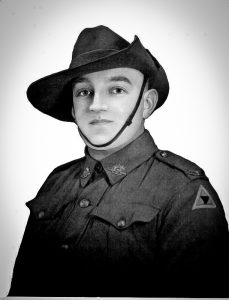
WX17864 Bendall, Bertram Alfred d. 12 Feb 1945 4 miles past Nelapak which is 12 miles east of Ranau (or away from Ranau). Bendall’s body was found by Track Recoveries. The Japanese had recorded his death as cardiac beri beri. Bendall was an orchardist with his family at Donnybrook where he was born and educated.d
Please read further about Bendall & Trigwell from Donnybrook
WX9017 Bird, Charles Roland
Left Sandakan with No. 2 March died Ranau (2) Jungle Camp 26.7.45 acute enteritis aged 28 years.
Bird was one of four 2/4th men to reach Ranau 2 Camp. Rolf Newling died 13 June. Arthur Thorns died 8 August.
On the 18 July the construction of a bamboo and atap hut 9m x 6m was completed for the POWs having been overseen by Sticpewich. About 72 men moved in. The hut was without sides but was a huge improve-ment to sleeping in ankle deep mud as they had been doing for the past three weeks. 40 men occupied the hut, and the rest who were dysentery patients were relegated to the sub-floor area to assist in preventing contamination.
Charlie Bird’s body was recovered after end of war from Ranau 2 Jungle Camp (near 110 mile peg Tambunun Track – about 5 miles south of Ranau)
The eldest of a large family he was known as ‘Charl’. He had worked at Connolly Bros, Palmyra carting bread.
WX9283 Browning, John Henry
Died Sandakan (2) 16.7.45 malaria aged 25 years – this information recorded by Japanese! It is believed Browning was one of 23 POWs massacred at Sandakan, their bodies recovered from slit trenches near airfield.
Right: Browning
 WX7702 Burns, Clifford E.
WX7702 Burns, Clifford E.
Died 4 Feb 1945 cardiac beri beri aged 28 years 1 mile after Murawatto in vicinity of 42 mpg, near track to Beluran First Death March.
Private Clifford Edward Burns of 2/4 Machine Gun Battalion was born in December 1916 at Dandenong, Victoria. He had five brothers and three sisters and they were the children of Joseph and Amy Burns of Port Pirie, South Australia and later Kalgoorlie.
He left school at 15 to work in the mines at Kalgoorlie with his father and a brother.
Cliff was good mates with Hack and Halligan.
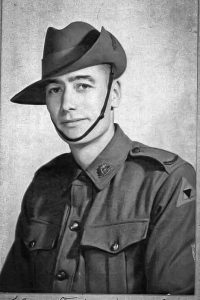
WX8397 Chipperfield,
Robert William – d.11 Feb 1945
1st March of cardiac beri beri aged 28 years. Same day as Bert Dorizzi on the First Death March. Bob was the tallest man in 2/4th, known and loved as a gentle giant.
Bob was one of 21 boys formerly from Fairbridge Farm School, Pinjarra who was with 2/4th

WX9274 Dorizzi, Gordon – d. Sandakan (1) 11.2.45. Sick with malaria, Gordon must remain behind while Bert and Tom are ordered to leave with First March. He dies 11 March 1945 aged 28 years. The brothers had arrived Borneo with ‘B’ Force.
WX7997 Dorizzi, Herbert – with 1st March dies heart failure (cardiac beri beri) four days into the March near Maunad River on 11 Feb 1945 aged 26 years. The same day as younger brother Gordon dies at Sandakan. Bob Chipperfield also dies of illness. Herb’s body is recovered on Sandakan-Ranau Track 4 miles from Segindai.
WX12884 Dorizzi Thomas Henry – d. Ranau (1) 11.3.45 Tom reaches Ranau No. 1 Camp. He dies of beri beri on 11 March 1945 aged 31 years and was buried at Ranau No.1 Camp Cemetery.
Please read further about the Dorrizi boys
WX8092 Dunn, Corp. Charles Henry
Died Sandakan (1) 21.3.45 of malaria. His body was also recovered from grave at No. 1 Camp. Charlie Dunn was the oldest of the 2/4th soldiers to die at Sandakan aged 44 years and was father to three young daughters.
Right: Dunn
WX9230 Evans, Walter Cyril
Died 16 June 1945 malaria aged 43 years Sandakan-Ranau Track near Kolapis – a tributary of Labuk River which crosses the Track about 45 miles from Sandakan. He escaped Sandakan 1 and was found in a known grave (information from ‘Sandakan A Conspiracy of Silence’ by Lynette Ramsay Silver).
WX7999 Ferguson, Reginald Paul (Reg)

Reg died having been on the First March and reached Ranau. He died Ranau (1) 23 March 1945 of acute intestinalitis aged 32 years. A Toodyay boy, Reg was married with two daughters. He enlisted AIF 13 Aug 1940, later joined ‘D’ Coy HQ. Reg had fought at Hill 200, Ulu Pandan and was evacuated 12 Feb 1942 due to shell shock.
WX10803 Fotheringham, Thomas Rantoul – d. 7 June 1945 2nd March aged 24 years of beri beri Sandakan-Ranau Track, Murawatto, in vicinity of 42 mile peg, near track to Beluran on Second March.


WX10994 Gibson, Norman Allen – left Sandakan with 2ND March (596 POWs in groups of about 50) 29 May 1945. He died 24 June aged 25 years acute enteritis Sandakan-Ranau Track 28 miles from Sandakan on a rice-carrying party. His body was recovered from a known grave.
WX7627 Goldie, James McLaughlan (Jim) immigrated with his family from Scotland.
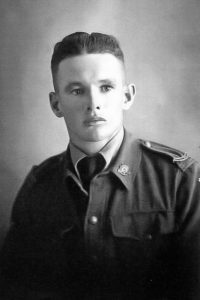
Died 4 June1945 acute enteritis aged 26 years Sandakan-Ranau Track 28 miles from Sandakan on 2nd March. Jim Goldie enlisted AIF 10 Aug 1940 and later joined ‘C’ Coy 12 Platoon under CO Mick Wedge.
Please read further about Goldie
Right: Goldie
Above: Tom Green
WX8540 Green, Thomas William (transported to Kuching and joined ‘E’ Force at Sandakan) – d. Sandakan (1) 22.1.45
WX8003 Hack, Alexander Meora Bridgetown born Hack became batman/runner to ‘E’ Coy SRB’s Major Saggers who thought most highly of him during the battle for Singapore where almost 40% of the Company were killed in a Japanese ambush at south west Bukit Timah 12 Feb 1942.
Died 4 Feb1945 First March aged 38 years beri beri and heart failure Sandakan-Ranau Track. Please read further about Hack
WX8819 Halligan, Jack born Menzies 1919.


He was motorcycle Orderly with ‘B’ Coy under Penrod Dean.
Died 4 Feb 1945 First March aged 25 years malaria Sandakan-RanauTrack 1 mile past Murrawatto in vicinity of 42 mile peg and near track to Beluran.
WX14830 Haly, Standish O’Grady
died on First March 15 June Sandakan Estate, 12 miles from Sandakan aged 29 years. His body was recovered from a known grave, identified and reburied in Labuan Cemetery. (so few bodies were identified) Haly had escaped from Sandakan. (information from ‘Sandakan A conspiracy of Silence’ by Lynette Ramsay Silver)
WX7851 Harris, Charles
Died Sandakan (1) 27.5.45 – died 27 May aged 31 years just two days prior to 2nd Sandakan – Ranau March which started on 29 May. His body was recovered at Sandakan 2 after the war.
Right: Harris
WX7029 Hill, Ernest Thornton
Died 25.5.45 aged 27 years. Unknown Location. Ernie Hill’s body was one of three bodies to this day, never recovered.
‘Ernie attended Northam High School and had to board in Northam as Dad was teaching at Bullsbrook. I do not know for certain but I think Ernie did some training in agriculture whilst at Northam. However, when he left school he went to work on farms in the Geraldton area. His brother George taught at a school at Yetna for a number of years and I think perhaps that is why Ernie may have gone to work in that area.’
Words from one of his siblings.
Ernie was one of 8 children born to his schoolteacher father. He enlisted the same time as brother Reginald. They were drafted to go to the Middle East with 2/28th re-inforcements Ernie was unable to go being ill with the mumps. He was then selected with 2/4th MGB. We believe Reg died after returning home. Another brother Arthur was taken POW in Germany and was fortunate to return home.
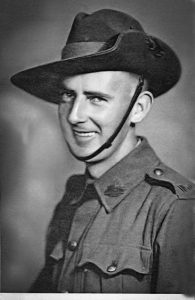
above: Colin Joynes
WX9297 Joynes, Colin d. Sandakan (2) 7.6.45. His identification disc was found at No. 2 Camp by War Graves Group. Colin was one of the 288 POWs too sick to leave on last March. His body recovered by War Graves Party at No. 2 Compound – slit trenches – burial site for all POWs after 29 May. The Japanese ordered all POWs out of their huts, then set fire to them. The POWs were to lay on open grounds, on groundsheet if they had them. Most managed to construct some shelter/humpy for protection from weather.

Above: Keay
WX8431 Keay, Vivian Albert – d. 10.5.45 malaria aged 39 years Sandakan his body recovered with many at slit trenches at Sandakan No. 2.
WX9801 Machonachie, Roy David
– departed on Second March from Sandakan 29 May died 26 miles from Sandakan 6 June 1945 malaria aged 25 years on the Sandakan-Ranau track.
Right: Machonachie who came to WA as a young boy with his family from Scotland.
Above: Johnny Morrison
WX9384 Morrison, John Campbell – Officer sent from Sandakan to Kuching in 1943. Survived

Above: Stan Neale
WX9260 Neale, Stanley Edward – d. 28.2.45 Unknown Location, Sandakan presumed. Aged 30 years. Enlisted from Elleker (near Albany). His sister Hannah Jemina Nora Neale married 1940 to George Robert Rouse WX7656 from 2/4th MGB. Rouse with ‘D’ Company was shot 8 Feb 1942 whilst attempting to escape having been captured by Japanese at Tanjong Murai, West Coast of Singapore.
WX8865 Newling, Rolf Walker – First March. d. Ranau (2) Jungle Camp 13.6.45 of malaria aged 33 years. His death left a widow and his son.
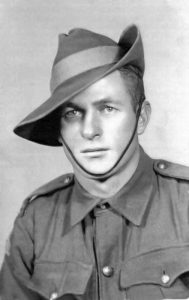
Rolf was the eldest of three Newling Brothers to join the 2/4th. Ossie d. malaria at Kuii Camp with D Force V Battalion 22 Oct 1943 aged 28 years and Rex also with D Force V Battalion died 29 Sep 1945 aged 30 years at Kuii Camp less than four weeks before his younger brother Ossie aged 28 years. Please read further about ‘D’ Force Thailand, V Battalion
His body was recovered and was one of only four bodies identified from 45 bodies at Cemetery A, Ranau which was in use from 10 June 1945 to approx. 9 July 1945. Four of the last 10 men to die at Ranau from First March included Rolf Newling – between 13 and 19 June 1945.(We know this because those six alive included Botterill and Moxham who both successfully escaped, survived and later confirmed their names.)

WX7634 Osborne, Sydney Albert
Died malaria Sandakan (2) 21.6.45 aged 31 years. He was located in a grave and identified by personal items found at Sandakan No. 2 Camp. (haversack, tin mug & web equipment). His Pay Book was found under a groundsheet with several others at No. 2 Compound. Syd left a young widow with 2 young boys. He was a former Pinjarra Fairbridge Farm School student as was his wife Irene Daphne Randall. Randall remarried. Sadly, Syd’s sons never knew about their father until late in life. Daphne’s second husband had forbidden any talk of Syd Osborne in the family home. His photographs also put away.
WX4934 Page, Ronald Arthur – left Sandakan with First March d. Ranau (1) near airstrip 17.2.45 aged 26 years acute enteritis. His body was recovered from Ranau No. 1 airstrip cemetery.
Below Right: Ron Page
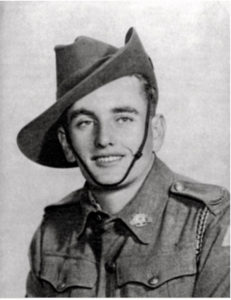
Above Left: Shirley
WX8535 Shirley, Arthur Francis died 10 May 1942, Malaria at Sandakan (1) 36 years. His body was recovered from Sandakan No. 2 Camp. His Pay Book was found at No. 2 Compound.

WX8467 Spence, Roderick Heslop Campbell known as Rod – d. 31 May 1945 malaria aged 40 years Sandakan-Ranau Track on 2nd March which left Sandakan on 29 May 1945.
Rod Spence was married.
WX227 Stevens, Alfred – Sentenced 6 years Outram Road Prison, Singapore for his involvement with the radio – Survived Please read further about Alf Stevens
There were two other 2/4th men imprisoned at Outram Road Prison – McGregor and Penrod Dean.
WX14775 Taylor, George Lane – d. 7 June 1945 malaria aged 25 years Sandakan-Ranau Track on Second March. His Pay Book was found under groundsheets, No, 2 Compound.
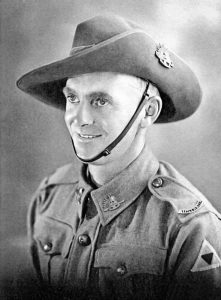

WX9562 Thorley, Ivor Edwin – d. Sandakan (1) 4.3.45 malaria aged 43 years. He never left Sandakan, being too ill and underable to ‘march’. He was buried No. 1 Cemetery.
Thorley was married with five children. He had gown up and lived around the Greenbushes/Bridgtown area where he was well known. He had been a competitive cyclist.
WX8438 Wilson, Ronald Matthew
Died Sandakan (1) 25.12.44 of malarial meningitis aged 35 years.
Ron was the son of Hale School Headmaster, Mathew Wilson. He attended Hale School from 1917 to 1926 and in his final year was a prefect, a fine footballer and cricketer.
He represented the School as a long jumper, hurdler and high jumper in the Inters athletics programme.
__________
‘E’ FORCE –
a) Total 34 men from 2/4th departed Singapore with ‘E’ Force Borneo for Sandakan.
b) Brian Walton was moved to Kutching with the Officers. He survived and RTA.
c) Total 33 (+ Green) = 34 POWs from 2/4th who sailed from Singapore to Sandakan with ‘E’ Force Borneo lost their lives.
d) Cole & Newman were with 88th LAD, attached 2/4th
WX8540 Green, Thomas Williamwas AWOL at Fremantle, missed reboarding ‘Aquitania’ and sailed to Java. He was selected to work on Burma-
Thai Railway with ‘A’ Force Burma Java Party No. 4a. At Singapore he became ill and remained behind when Williams and Black Forces moved to north Burma.
Green was then transported to Kuching sailing from Singapore 3 Feb 1943 with a total of 104 men from Java Parties No, 1 and 2 (British) and Parties No. 3,4 and 5a (Australian).
No combatant offers were allowed to accompany the men to Sandakan and remained behind at Kutching. Two officers and 15 men in this draft were replaced with 17 other ranks that had arrived in February. Unfortunately for Tom Green, he was one of the 17 men who joined the men of ‘E’ Force to march out of Lintang Barracks to board ‘Taka’ Maru to sail to Sandakan.
WX7636 Beer, William John – d. 14 June 1945 Sandakan aged 28 years malaria. Bill was born in WA Goldfields and the family moved to Bunbury. Bill enlisted from Bunbury.
WX9340 Bennett, Henry Patrick – d. 15 Feb 1945 aged 30 years on First March of heart paralysis (cardiac beri beri) east of Tampias – his body was found and removed by Track Recoveries Party. Pat was a Gnowangerup boy. There were about 4-6 chaps from Gnowangerup in 2/4th.
Pat Bennett’s location is not included on the map showing WA POW deaths however, you can clearly see Tampias on the below map.

WX7007 Burton Edward George – d. Sandakan (1) 21.2.45 of malaria aged 22 years. Below: Eddie Burton
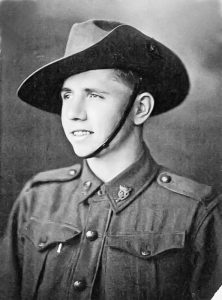
WX8123 Chilvers, Herbert Alfred Thomas – d. Sandakan (1) 31.3.1945 of malaria aged 33 years.
Below: Chilvers

SX11457 Cole, Edwin Cole – d. Sandakan (1) 13.5.45 his body was recovered from Sandakan No. 2 Camp. His Japanese records state he died of malaria aged 35 years. Born in England Cole enlisted SA. He joined 88 Light Aid Detachment under command of WX11001 Capt. A.H.R. Odlum.
WX6262 Earnshaw, William Howard (Bill) another Kalgoorlie Boy.
Bill died at Sandakan (1) 15.3.45 malaria aged 25 years before the 2nd March.
WX7266 Edwards, George Henry – d. Sandakan (1) 20.3.45 malaria aged 34 years. An early enlistee, George was one of 160 English- born men of 2/4th. He joined ‘B’ Coy No. 8 Platoon.
WX12663 Floyed, Arthur Ernest (known as Artie)
Right: Floyed
Died Sandakan (1) 12.3.45 malaria aged 26 years. This was the time between 1st March and the 2nd March. Narrogin born Floyed enlisted 9 May 1941 and later joined ‘C’ Coy HQ as a reinforcement under CO Capt. Colin Cameron.
WX9225 Gibbs, Stuart Henry – d. Sandakan (1) 24.2.45 acute enteritis aged 41 years. He was father to several children. His wife returned to SA where she was born. Stuart had been farming around the Ongerup area. He enlisted at Albany. His mother and sisters were living in Australia, either Victoria or SA. Below: Stuart Gibbs.

WX17636 Holland, Harold William – with the 2nd March d. 15 June 1945 Sandakan-Ranau Track somewhere before 18 mile peg and Boto of malaria aged 30 years. He was a reinforcement, enlisted 12 Nov 1941and joined ‘B’ Coy No. Platoon.

WX16416 Holme, Charles – d. 7 June 1945 malaria aged 22 years Sandakan-Ranau Track on Second March. He was one of 35 Australian POWs massacred – others from 2/4th included Sevier, George Smith and George Taylor. Please read further about Holme
WX8678 Holst, Eric Joseph – d. Sandakan (1) 20.3.45 malaria aged 31 years. Holst was from the goldmining settlement of Widgiemooltha.

WX17582 Lake, George –
Collie born George was a reinforcement, joining ‘E’ Coy. d. Sandakan (1) 8.4.45 aged 23 years at Sandakan and was buried Cemetery No.2.
Please read further about George Lake
There were many Collie boys in the 2/4th
Right: George Lake
WX16439 Lane, Dennis Richard – d. Sandakan (1) 16.1.45 beri beri aged 24 years.

The photograph right shows just how young this men were!
Lane was a reinforcement who joined 2/4th at Fremantle onboard the ‘Aquitania’ – he was one of 14 reinforcements sent to ‘A’ Coy HQ.
His death at Sandakan on 16 Jan 1945 was around the time the First March left for Ranau. Perhaps there was some relief (if that is possible with a young man’s life) Dennis did not endure the marches or linger on at the Sandakan Camp.
The Lane family migrated from England. His brother also enlisted. Tragically Private Anthony Lane, service number WX12342 of 2 Independent Company, was killed in action at Timor on 20 February 1942.
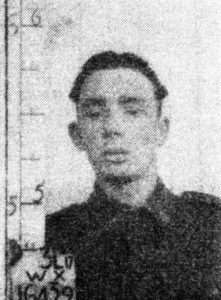
WX7043 Lear, Hold Bernard – d. Sandakan (1) 17.3.45 malaria aged 25 years.


Above: Ron Moran
WX15386 Moran, Ronald Keith d. Sandakan (2) 28.6.45 – Ron Moran was the youngest of 2/4th men. He turned 21 years 3 days before he died (Malaria) at No. 2 Camp on 28 June 1945. Ron was 17 years old when he enlisted. He was with ‘E’ Force made up 500 Brirtish & 500 Australian Dep. Singapore 2 March 1943. Arrd. Sandakan No. 3 Camp June 1943. 17 Oct 1943 2 days after most officers removed to Kuching, ‘B’ and ‘E’ Forces amalgamated. His Pay Book was found under groundsheets at No. 2 Compound.
WX17363 Nash, Claude Ocea – d. Ranau (1) 23.3.45 – his POW Tag was found No. 2 Jungle Camp at 110 1/4 mile Camp. He left Sandakan with First March.

WX8707 Nazzari, Francisco (Frank) – d. Sandakan (1) 24.4.45 of acute intestinalitis aged 29 years. Frank had been a miner at Widgemooltha prior to his enlistment with AIF. Below: Frank Nazzari

WX12985 Negri, Peter James

– died Sandakan No. 1 Camp 21.1.45 cardiac beri beri aged 25 years. He was an only son. The Negri family resided at Kirup.
Right: Peter Negri
Above: Cecil Newman
NX73279 Newman, Cecil William – d. 13 March 1945 Sandakan aged 24 years. He was with 88th LAD as was Spence.
WX9413 Noble, Frank Richard
died Sandakan No. 1 camp 26.5.45 of malaria aged 25 years. Frank was possibly fortunate in that he died before the 2nd march was selected and before the whole campsite was burned down.
Above: Les O’Neil
WX5222 O’Neil, Leslie – d. Sandakan (1) 16.12.44 Sandakan acute enteritis aged 36 years. If there could a positive comment we say Les O’Neil was fortunate to miss the very Grim days of Jan-Aug 1945 with the Sandakan-Ranau Marches and the slow starvation by the Japanese of all POWs./
WX9253 Ross, Donald
d. Sandakan (1) 25.5.45 of malaria aged 32 years. Married to Ade Bunker, sister of Harry Bunker WX9233 MGB who sailed from Singapore to work Burma end of Thai-Burma Railway with ‘A’ Force Burma, Green Force No. 3 Btn. (Bunker was an extraordinarily lucky POW who survived long enough in South China Sea when ‘Rakuyo Maru’ sunk after being hit by American Submarines 12 Sept 1944 – saved by USS ‘Queenfish’, one of American submarines which attacked their convoy sailing to Japan.) Ross and Bunker from Albany.
WX8544 Sevier, Joseph – d 7 June 1945 Sandakan-Ranau Track of malaria aged 38 years with Second March. Member of ‘E’ Force he migrated from England to WA and took up farming at Muckinbudin. Sevier and his brothers worked long hours attempting to make a rural living. There was no time for marriage. He had enlisted October 1940. Became Driver with 2/4th’s Company HQ.
WX5018 Shelvock, Charles Baden – d. Sandakan1 on 17.4.19 45 beri beri aged 38 years. Below: Charlie Shelvock

WX4891 Smith, George – d. 7 June 1945 Sandakan-Ranau Track on Second March aged 42 years.
WX8731 Smith, Thomas Ernest – d. Sandakan (1) 18.12.44 pulmonary tuberculosis and beri beri aged 32 years.
WX7789 Stanwell, Oliver Moir (Corporal) Driver – d. Sandakan (1) 12.3.45 malaria aged 39 years. Stanwell enlisted AIF 10 Aug 1940, later joined ‘D’ Company HQ
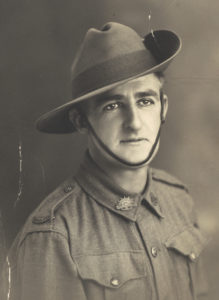
Stanwell had married Dec 1940 to Marjorie Kensall.
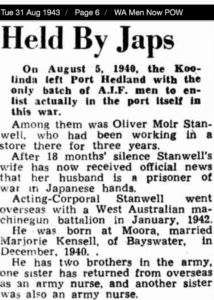
Stanwell’s wife and family had their hopes lifted in August 1945 – this good news was no longer when the families would have been advised in November 1945of his death.
WX8867 Taylor, George William – d. Sandakan (1) 2.3.45 malaria aged 43 years.
-
WX10289 Thorns, Arthur Stanley (one of 17 ill POWs beaten to death 1.8.1945, amongst last group massacred at Ranau (2) Jungle Camp). He left Sandakan with the Second March. His POW tag was found at No. 2 Jungle Camp 110 1/4 mile.

-
Goldfields boy Arthur Thorns (photo Right) was the last man from 2/4th to die on the Sandakan-Ranau March on 1 August 1945.
-
By August all the men from 2/4th were dead.
-
His death at the age of 27 years was murder.
-
WX17882 Trigwell, Allan George
-
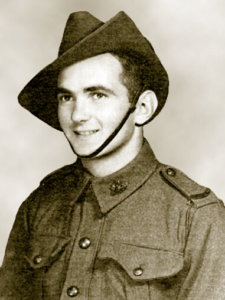
-
born Donnybrook Trigwell died Sandakan (1) Camp 4.5.45 malaria aged 23 years.
- He was 2nd youngest of four sons and one daughter.
-
Two of Allan’s brothers enlisted, Colin William WX4110 returned home safely having been POW Japan and Leonard Frederick WX32276. Allan was the only son not to return home.
-
Right: Trigwell
- Please read further about Trigwell
Above: Ray Turner
WX17593 Turner, Harold Raymond – d. Sandakan (1) 8.5.45 malaria aged 25 years. Enlisted with ‘E’ Coy and was fortunate to survive the ambush at Sleepy Hollow. He was a storeman with Robur Tea. He was an only son with three sisters.
WX10363 Walton, Alexander Brian – Officer sent from Sandakn to Kuching in 1943. Survived
WX8706 Wilkie, James (Scotty or Jimmy) – d. Sandakan (1) 17.5.45 malaria aged 36 years. Arrived from Scotland in 1928. Enlisted AIF 23 Oct 1940, later joined Headquarters Company No. 2 Platoon, Anti Aircraft.
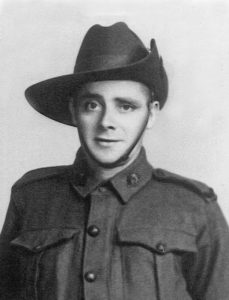
Jimmy never married and had worked as a labourer in WA’s south west, in 1937 he had Gascoyne Location 179 at Carnarvon, where he was ‘tropical grower’. He was working as a miner Norseman when he enlisted.
Jimmy was good mates with Richard Blaschek, Biill Struthers and Jimmy Hall. The four men had enlisted on 23 Oct 1940 and all joined 2/4th’s Headquarters Companies. Wilkie was the only one not to survive and return to Australia.

- * Died Sandakan No. 1 Camp
- * Died Sandakan No .2 Camp

- * Died Ranau No. 1 Camp

- * Died Ranau No. 2 Jungle Camp

- * Died on March or place of death unknown.

Deaths and known details
-
On 7th June 1945, during the Second Sandakan to Ranau Death March Charles Holme, Joseph Sevier, George Smith and George Taylor died. Their official Japanese death records state they died of malaria. However it would be reasonable to assume they were executed by their guards. Their bodies were recovered after the war and laid to rest at the Lubuan War Cemetery.
-
Bob Chipperfield and Bert Dorizzi died 11 February 1945 whilst on First Sandakan to Ranau Death March. Chipperfield died 5 miles from Sagadai and Bert Dorizzi 4 miles on the other side of Sagadai. When Tom Dorizzi on the next march to Ranau passed the location where Bert was buried, took with him his brother’s dog tags which he recognised.
-
Gordon Dorizzi, third of the Dorizzi boys, died at Sandakan No. 1 Camp on 11 February 1945, the same day at his brother Bert. Tom Dorizzi died at Ranau exactly a month later on 11 March 1945.
-
Jim Goldie and his mate from Worsley, WA,
Charlie Holme (known as Bubbles) were both on the Second Sandakan to Ranau Death March and although separated at the time, Jim died on the 4th June and Charlie died on 7th June 1945. -
Frank Armstrong WX7717 was the first death in Borneo on 3 June 1942, read about his death.
-
One member of ‘B’ Force from 2/4th survived was Alfred Stevens WX2227. Stevens was arrested with the large number of POWs involved in the Secret Radio at Sandakan. Although imprisoned at the dreadful and nortorious Outrim Road Gaol – this incredible man survived the punishments meted out to him on a daily basis. He triumphed by returning home to WA. Below:
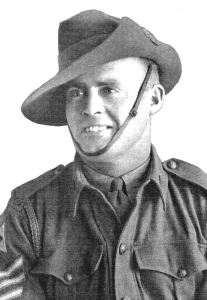
-
There were five men from 2/4th who reached Ranau and died there. Arthur Attenborough WX7444 died on 12 Apr 1945, Tom Dorizzi WX12884 died on 11 March 1945, Reg Ferguson WX7999 died on 23 March 1945 (both Dorizzi and Ferguson came from Toodyay), Claude Nash WX17363 died on 23 March 1945 same day at Reg Ferguson, Ron Page WX4934 died on 17 Feb 1945.
Below: Ranau Memorial with names of all those who died there.



Sandakan War Graves October 1945
SANDAKAN 1945-10-24. NORTH EAST BORNEO FORCE. SANDAKAN PRISONER OF WAR CAMP. QX63589 CAPTAIN R. A. HOUGHTON, 23RD WAR GRAVES SERVICE UNIT, EXPLAINS RESULTS OF EXAMINATIONS OF GRAVES IN THE PRISONER OF WAR CAMP AREA TO LIEUTENANT COLONEL J. A. ENGLAND, COMMANDER OF NORTH EAST BORNEO FORCE.
RECOVERY OF RELICS
Lynette Silver’s book ‘Sandakan – a Conspiracy of Silence’ Sally Milner Publishing -P 361, ‘Items found Sandakan No. 2 Compound’ include:
Colin Joynes identification disc (died 7 June 1945)
Syd Osborne’s haversack, tin mug and web equipment (died 21 June 1945)
Frank Shirley’s paybook (died 10 May 1945)
Amongst the paybooks found under groundsheets at No. 2 Compound No. 2 belonged to:
Ron Moran, Syd Osborne and George William Taylor.
Lynette Silver’s book ‘Sandakan – a Conspiracy of Silence’ Sally Milner Publishing P 362, ‘Items found at Ranau – No. 1 Camp’
Arthur Attenborough’s identity disc (died 12 April 1945)
Gordon Dorizzi’s POW Tag (died 11 February 1945)
Bert Dorizzi’s identity disc (died 11 February, 1945)
Lynette Silver’s book ‘Sandakan – a Conspiracy of Silence’ Sally Milner Publishing P 363. Items found at No 2 Jungle Camp, 110 ¼ mile:
Claude Nash’s POW tag (died 23 March 1945)
Arthur Thorns POW tag (died 1 August 1945). Thorns was amongst the last POW group at Ranau to be massacred.

AWM Photo of Sandakan escaped
‘SUCCOURED BY FRIENDLY NATIVES WHEN THEY ESCAPED FROM THE JAPANESE PRISON CAMP AT RANAU, AFTER SURVIVING THE SANDAKAN DEATH MARCH, THREE AUSTRALIAN PRISONERS OF WAR (POWS) WERE FLOWN OUT TO THE LABUAN AIRSTRIP BY RAAF AUSTER PILOTS. LEFT TO RIGHT: GROUP CAPTAIN J. R. FLEMING, KEW, VIC, COMMANDING OFFICER OF NO. 83 (ARMY COOPERATION) WING RAAF; PILOT OFFICER J. C. THOMAS, TOORAK, VIC; PRIVATE NELSON SHORT, WOOLLAHRA, NSW, 2/18TH BATTALION; WARRANT OFFICER WILLIAM H. STICPEWICH, NEWCASTLE, NSW, 8TH DIVISION, ARMY SERVICE CORPS; PRIVATE KEITH BOTTERILL, KATOOMBA, NSW, 22ND BRIGADE HEADQUARTERS; FLYING OFFICER TED DOWSE, DOUBLE BAY, NSW. A FOURTH MAN, BOMBARDIER MOXHAM WAS TOO ILL TO BE PHOTOGRAPHED WITH THIS GROUP.’

AWM Photo – Australian felt hats found Sandakan 1945.





Below: Catalinas which flew over Sandakan.

We acknowledge and thank US Navy website
Below: SANDAKAN, NORTH BORNEO 26 OCT 1945. BADLY EMACIATED CHINESE, MALAY, AND JAVANESE MEN, WOMEN AND CHILDREN IN A WRECKED SHED, USED AS A TEMPORARY HOSPITAL BY THE BRITISH BORNEO CIVIL AFFAIRS UNIT (BBCAU). THIS PHOTOGRAPH WAS TAKEN EIGHT DAYS AFTER THE ALLIES LANDED AT SANDAKAN. THESE PEOPLE WERE DESPERATELY ILL, LYING ON BARE BOARDS WITH TWO SIDES OF THE SHED OPEN TO THE WEATHER, AND WHEN PHOTOGRAPHED THERE WAS NO WATER FOR THEM AND VERY LITTLE FOOD


Above: SANDAKAN 27 Oct 1945. NORTH EAST BORNEO FORCE. TWO JAPANESE PRISONERS SHELTER FROM THE SUN IN THE RUINS OF SANDAKAN PRIOR TO EMBARKING ON LANDING SHIPS, TANK (LST)
Below: SANDAKAN 27 Oct 1945 NORTH EAST BORNEO FORCE. JAPANESE PRISONERS CARRY A SICK COMRADE TO A WAITING LANDING SHIP, TANK (LST) WHILE ANOTHER ONE ASSISTS A WALKING CASE

 Above: Japanese civilians departing Borneo.
Above: Japanese civilians departing Borneo.
 Above: Japanese lining up for possible identification.
Above: Japanese lining up for possible identification.


Above: Suspected War Criminals Corpl. Kazi Unokichi & Pte. 1st Class Nakura Takeshi

Above: Kono Kinziburo (wanted War Criminal) & Mizouchi Shigenibo
Please read about the Boyup Brook Sandakan War Memorial & Ted Mcloughlin
Also read the Borneo War Trials at Labuan
Every returning 2/4th former POW knew the men who died in North Borneo. They may have lived in the same town/region, played sport with them, trained with them, been in same Company and fought with them, been in same work parties around Singapore. Learning about Sandakan was a huge ‘blow’ to the as it was with Ted.
And please read about 2/4th contribution & Boyup Brook Memorial
Below: KUNDASAN WAR MEMORIAL, BORNEO.
LEFT TO RIGHT: KEITH BOTTERILL, OWEN CAMPBELL, NELSON SHORT, HARRY JACKSON – THE FIRST THREE WERE SANDAKAN DEATH MARCH SURVIVORS.


Above: SURVIVORS OF THE BORNEO DEATH MARCH ARRIVING AT SANDAKAN AIRPORT.
LEFT TO RIGHT: OWEN CAMPBELL, HARRY JACKSON, KEITH BOTTERILL AND NELSON SHORT. HARRY JACKSON WAS NOT A POW OR INVOLVED IN THE ACTUAL DEATH MARCH BUT RETRACED THE ROUTE IN 1946 AFTER THE CESSATION OF HOSTILITIES TO REWARD NATIVES WHO HAD HELPED THE AUSTRALIANS ON THE MARCH.
Below: Kings Park.

Please take a look at DVA’s view of Sandakan




